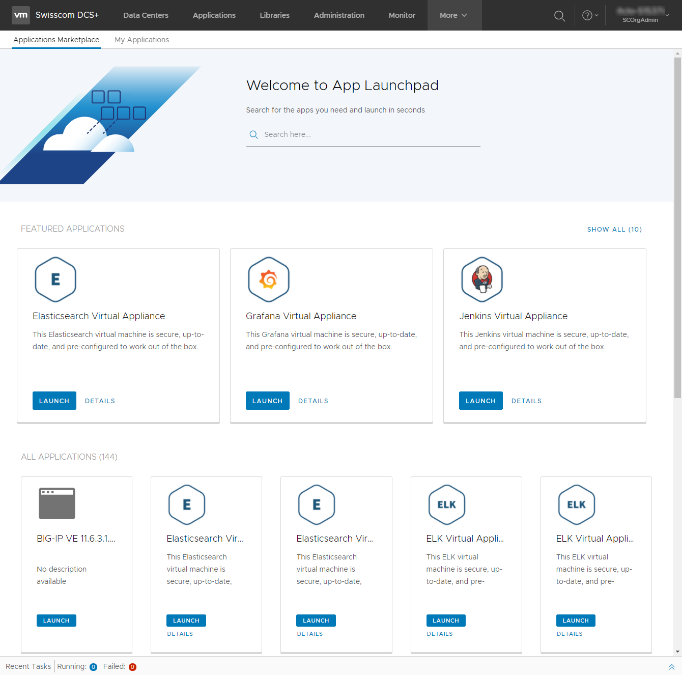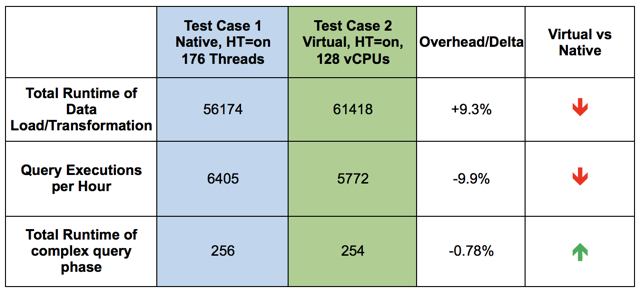Contents
- 1 Here is a demo that shows App Launchpad 2.0 on VCD 10.2 accessing and provisioning Bitnami container images and Helm charts on VMware Tanzu Kubernetes clusters.
- 2 How is VMware helping cloud providers attract cloud-native developer workloads?
- 3 VMware Cloud Provider partner now offering application managed services with VCD and Bitnami:
- 4
- 5 Why should enterprises choose developer ready cloud providers?
- 6
- 7 Key Takeaways:
VMware Cloud Director (VCD) 10.2 and App Launchpad 2.0 now support Bitnami container images and Helm charts enabling VMware Cloud Provider partners to offer VMware Tanzu based containers-as-a-service and attract developer workloads for cloud-native applications.
VMware Cloud Director’s App Launchpad is a plug-in for VMware Cloud Director that provides catalogs of deployment-ready applications for developers and DevOps engineers. The latest version App Launchpad 2.0 is GA now supports container applications and Helm charts. Further, with VCD 10.2 supporting multi-tenant Kubernetes deployments it is easier than ever for developers to deploy container applications without the need to manage the underlying infrastructure.
With VMware Tanzu on VCD, cloud providers can offer containers as a service, and now with Bitnami container images, they can move beyond IaaS into cloud-native application services. The combination of Bitnami and VMware Tanzu Kubernetes offerings allows VMware Cloud Providers to expand their multi-cloud services and address the needs of Developers and DevOps and attract new workloads, such as Test/Dev environments, onto their clouds. A significant effort is expended by developers in getting all the open-source components in one environment. VCD, Tanzu, and Bitnami make it easier for developers to focus on their innovative applications by providing the most up to date developer tools and simplified container infrastructure in a secure environment. This enables developers to quickly get their prototypes built and have a faster path to deploying them in production environments.
Here is a demo that shows App Launchpad 2.0 on VCD 10.2 accessing and provisioning Bitnami container images and Helm charts on VMware Tanzu Kubernetes clusters.
How is VMware helping cloud providers attract cloud-native developer workloads?
Cloud providers can now offer a fully-managed platform for enterprises to build and deploy their mission-critical cloud-native applications quickly in their VMware Cloud Provider environments: on-premises, hosted private, and public clouds. With Bitnami content integrated into the VCD 10.2 and App Launchpad 2.0, VMware Cloud Providers can now offer managed cloud-native application services on top of the container infrastructure managed services they already provide using VMware Tanzu. With applications and components available as container images, VMware Cloud Providers offer the flexibility of deploying Bitnami applications as containers to suit the digital transformation needs of Enterprises. Bitnami maintains, updates, certifies, and continuously delivers a broad selection of applications and components, so cloud providers can rely on them and deploy across multiple platforms for their tenants. Each Bitnami Application Catalog application and component is built from a trusted source, scanned for vulnerabilities, tested for functionality, and published ‘deploy-ready’ directly to private repositories. A VMware Cloud Provider can now offer any application in the Bitnami Application Catalog on their managed clouds, on-premises, hosted private, and public clouds. This maximizes the flexibility for a cloud provider to offer the same Bitnami content in their VCD based multi-tenant clouds, and as they expand their managed services to VMC on AWS, Azure VMware Solution and Google Cloud VMware Engine.
VMware Cloud Provider partner now offering application managed services with VCD and Bitnami:
(by Christian Hoffmann)
One of our premier VMware Cloud Providers, Swisscom, is now offering application services with Bitnami on VCD with App Launchpad 2.0.
Swisscom Dynamic Computing Services (DCS) is one of Switzerland’s best known and reliable cloud computing platforms. DCS offers enterprises a wide range of computing, storage, connectivity, license delivery, and value-added services (Backup, Disaster Recovery, Security and packaged enterprise applications). Furthermore, it offers a solution for hosting simple websites as well as data centers completely in the cloud with data stored in Switzerland within Swisscom data centers only.
Swisscom is actively working with VMware to extend its application managed services, based on the VMware Cloud Director (VCD) and VMware Application Launchpad (ALP), by offering Bitnami content to provide a rich set of workload solutions (over +133 templates) such as developer tools, databases, and network & security solutions on DCS. With Bitnami available on VCD and ALP, DCS now has these pre-approved solutions to shorten the “builder’s journey” included – an end-to-end process that tracks the entire application lifecycle.
For those new to DCS, the easiest way to get started is through Cloud Director with Bitnami. It provides pre-packaged application images for DCS Cloud servers, allowing immediate productivity with the new server. All that needs to be done is to select the App Launch Pad within Cloud Director and to choose the application template to be deployed.

VMware and Swisscom DCS are proudly partnering to help enterprises easily develop and deploy cloud-native applications in DCS.
For more information about DCS, please visit Swisscom Dynamic Computing Services (DCS): https://swisscom.ch/dcs or contact us at SpecSales.CLOUD@swisscom.com
Why should enterprises choose developer ready cloud providers?
Enterprises can now build and deploy their mission-critical applications faster on their preferred VMware Cloud Providers. Enterprises can BYOA (Bring Your Own Application) or build their applications from open-sourced components on offer from Bitnami and deploy them as containers across multi-clouds in cloud provider environments with VMware Tanzu. Whether they are building a simple prototype or a business-critical product, cloud providers now offer a fully-managed platform gives enterprises and their Lines of Business developers, the simplest path to delivering apps quickly. Further, these developers can also build their applications from the open-sourced components on offer from Bitnami and deploy them with ease across managed multi-clouds from cloud providers. For the workloads that will benefit from containers, VMware Tanzu and Bitnami now deliver a fast path to deploying and managing containerized applications. Further, an enterprise can either transform existing applications into containers or build their own containerized applications with the trusted and verified components from Bitnami and deploy them in their cloud provider environment. For other workloads that are better suited as a VM, they can deploy the virtual machine images from Bitnami on their cloud provider environments. Further with Tanzu on vSphere 7 enterprises can deploy both the VM and container applications and services on cloud provider-managed environments.
In summary, enterprises can now consume managed application services from VMware Cloud Providers. They can consume and deploy readily available applications or build their own with the components from the Bitnami content available from VMware Cloud Providers. They can also deploy them on multiple platforms: containers, and VMs, as required by their digital transformation initiatives.
Key Takeaways:
- VMware Cloud Director 10.2 and App Launchpad 2.0 now support Bitnami container images for cloud providers to easily offer managed cloud-native application services along with their managed containers-as-a-service with VMware Tanzu.
We are excited about these new offerings on VMware Cloud Director and App Launchpad and as always are focused on innovating and improving to help serve our VMware Cloud Provider partners by adding new managed service offerings to their portfolios. We will continue posting new technical and product information on our VMware Cloud Provider blogs. Join us by following the blog directly using the RSS feed, on Facebook, LinkedIn and on Twitter, and by visiting our YouTube channel too.
As always, thank you, and please stay safe.






